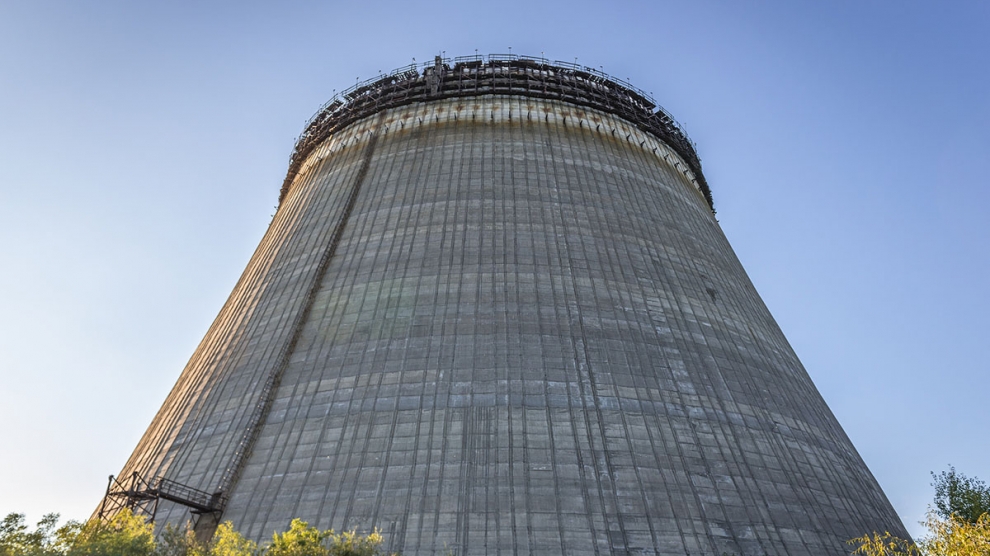As the European Commission moves ahead with its New Green Deal, which aims at reducing carbon emissions 55 per cent by 2030, and sets 2050 as its target date for zero-emissions, the European Parliament is not excluding the wider use of nuclear power as a way of meeting its long-term goals.
“The European Parliament believes that nuclear energy can play a role in meeting climate objectives because it does not emit greenhouse gases, and can also ensure a significant share of electricity production in Europe,” the EU says.
The 126 nuclear power reactors currently in operation in the European Union account for 50 per cent of the region’s low-carbon electricity output, saving as much as 700 million tonnes of CO2 emissions each year.
The economy of nuclear
Russia’s State Nuclear Energy Corporation, better known by the acronym Rosatom, has long viewed emerging Europe as an area ripe for growth. For Sergey Margelov, the director of Rosatom Central Europe, the use of nuclear power delivers tangible and valuable benefits: it is proven to boost economic growth, improve energy security and resilience of the grid and reduce the carbon intensity of the power generation sector and air pollution.
“In the absence of sufficient hydropower resources, nuclear is the only low carbon source of dependable power generation,” he tells Emerging Europe. “Renewables are dependent on weather conditions and require back-up capacity. The CEE region is no novice when it comes to nuclear energy and is set to expand its nuclear capacity as it is, according to multiple studies, the most cost-efficient way of meeting climate targets.”
Currently, Central and Eastern Europe can count 41 nuclear power plants (NPPs), with Rosatom present in four countries (Hungary, the Czech Republic, Slovakia and Bulgaria).
“Despite the initial investment cost, in terms of final cost per unit of electricity over the operational lifetime (for the latest generation nuclear power plant it is 60 years) it offers the best value for money to the energy system,” explains Mr Margelov. “From the perspective of energy security and independence, nuclear power also contributes positively as the final output price is relatively insensitive to the uranium fuel price (constituting as it does less than 10 per cent of the electricity production cost) in stark contrast to fossil fuel-fired technologies in which the figure can approach 70 per cent.”
As the environmental NGO Greenpeace points out however, this does not take into consideration the cost of managing and eventually disposing of nuclear waste, including spent fuel. According to its report The Global Crisis of Nuclear Waste, no country has a credible estimate of the total costs that will be incurred to manage nuclear waste over many decades – let alone centuries – and even recent cost estimates are lacking in many countries. Almost without exception, the costs do not include the vast quantities of other waste arising from the nuclear fuel chain, which will lead to an enormous future financial burden that will need to be paid by taxpayers.
For Mr Margelov this is counterbalanced by significant economic benefits. The operation of a 1,000 MW NPP supports in excess of 500 direct local jobs throughout its 60-year life and there is an even greater wave of job creation during the construction phase of the project as a new nuclear build project supports 2,000-5,000 new jobs depending on its scale.
“Furthermore, the local sourcing of building materials for the manufacture of the non-reactor elements of an NPP stimulates the domestic construction industry, and so increases potential tax revenue,” he adds. “Finally, the ready and reliable availability of large scale, low-cost electricity is a prerequisite for the competitiveness of a modern economy and so plays a vital role in stimulating growth and promoting further advances in living standards.”
Saving costs, saving time
It is not just a reduction in carbon emissions that needs to be taken into account. Cost and time are also part of the equation.
“If the emission and climate targets of the Paris Agreement and related international treaties are to be met, it is incumbent upon the electricity sector to decarbonise furthest and fastest,” says Margelov. “It has been argued that renewable energy technologies alone (mainly wind and solar energy) can deliver this decarbonisation but this is misleading as the impact on the power sector of total renewable penetration in the short to medium-term would be highly detrimental to its function and to economies and livelihoods. At present, the electricity storage technologies – required to offset the variable nature of renewable energy generation – remain expensive at durations exceeding the very short-term. Furthermore, there exists no affordable or commercialised technology by which renewable power can be stored over the long-term and so no means by which to balance the varied seasonal availability of solar and wind energy.”
The World Nuclear Status Report shows that few NPPs were built in recent years in Europe, and that the average time it takes to build a new reactor are increasing (to more than 30). This means that by the time construction is complete, both the technology employed and the environmental impact assessments are out of date.
However, the report does not make any distinction between so-called normal reactors, which are built in stages, and one-off, pilot, experimental projects. According to the International Atomic Energy Agency (IAEA), the typical range of construction time for a reactor built in stages is about five-seven years from the pouring of the first concrete on the site to the moment of connection to the grid.
“By now, a new nuclear build based on a tried and tested serial reactor design is the fastest, reliable and the most efficient way of reduction of carbon emissions,” says Mr Margelov. “Replacing 1 GWt of coal-fired capacity with a nuclear reactor of 1-1.2 GWt cuts emissions by seven-nine million tonnes of CO2 equivalent per year. A combination of variable renewables and natural gas would require over 2GW of combined capacity while enabling just about half of that reduction (four-five million tonnes).”
Therefore, Rosatom is continuing to invest in the region with two more nuclear power plants under construction in Belarus and one in Hungary.
“Rosatom is now working on the construction of 36 reactors in 12 countries with significant supply chain opportunities for CEE firms as many of them have decades-long experience in working with Russian nuclear technologies, have world-class manufacturing expertise and offer great value for money,” Mr Margelov says.
Rosatom will deliver an extension to the Paks NPP in Hungary in the coming years and will endeavour to demonstrate that new reactors can be built on time and within budget to ensure clean, safe and reliable energy supply into the future.
“We have also expressed our interest in participation in the revived Belene project in Bulgaria. We are also likely to bid in the tender for a new nuclear project in Czech Republic,” he confirms.






[…] energy remains a divisive topic across Europe as governments weigh up the need to cut carbon emissions with fears about […]